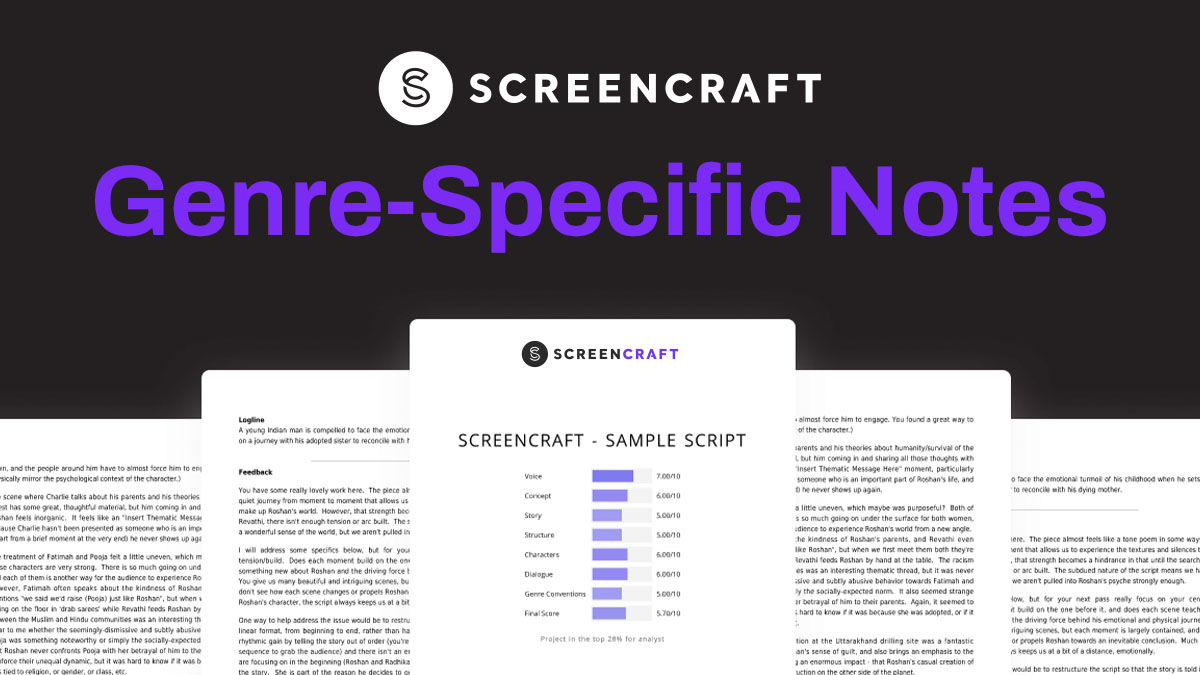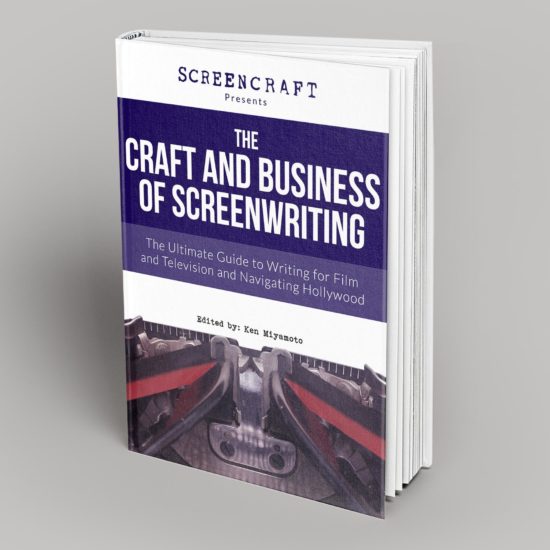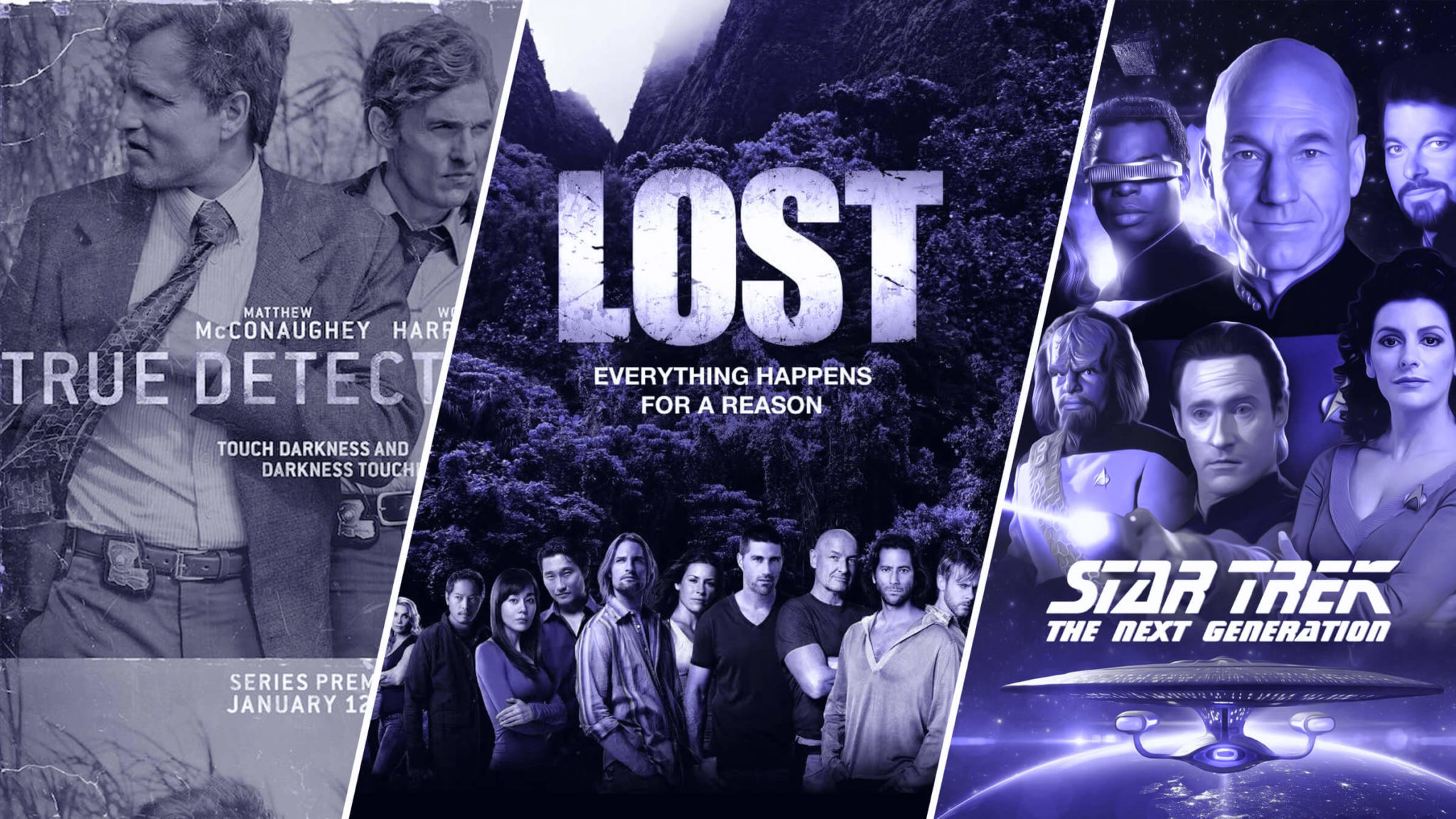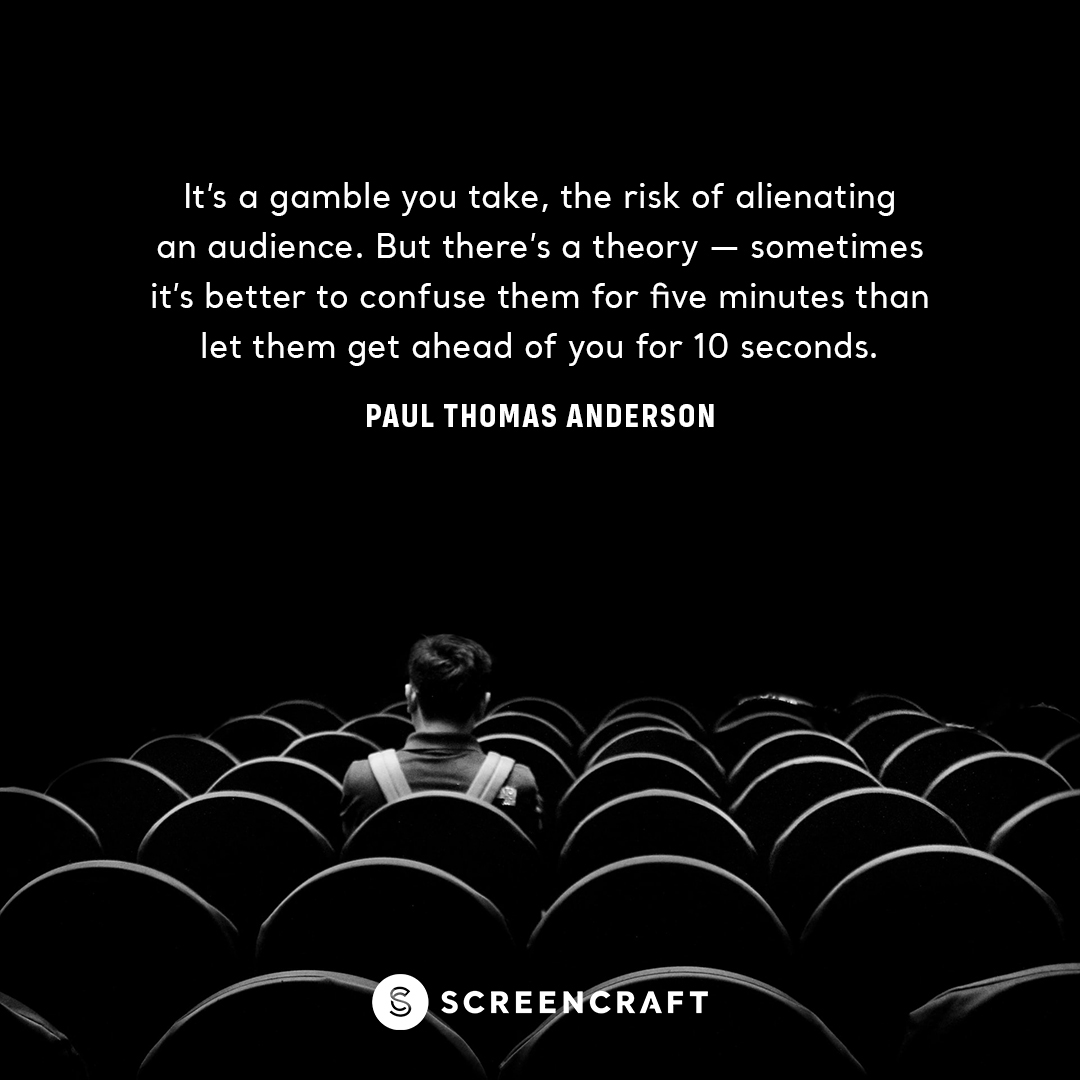11 Pro Steps to Developing Your TV Show Bible
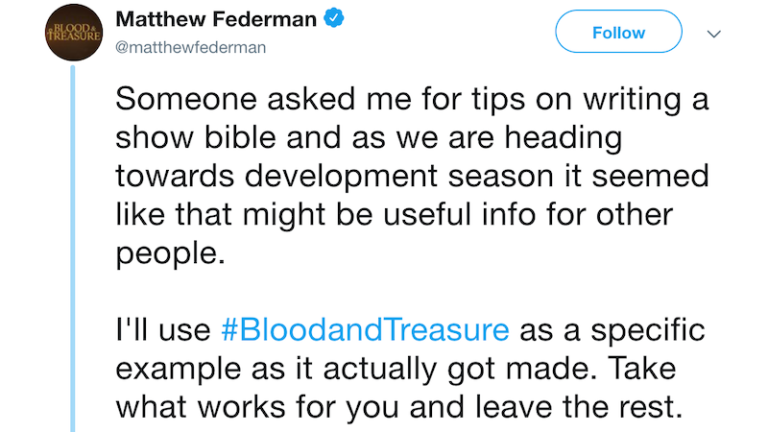
What are some tips from professional showrunners, executive producers, and television writers that writers can use to develop their show bible for a series that they are pitching?
If you're writing an original television pilot and developing a pitch for the potential series, your research has likely led you to that dreaded document — the show bible.
Do you have a pilot that needs to be read? Enter the ScreenCraft Pilot Launch TV Script Competition here.
The Show Bible
The show bible has evolved. In the beginning, writer rooms of shows that had been on the air for multiple seasons would create show bibles specifically for the purpose of informing incoming new writers. Because the shows had multiple seasons, writers would come and go. In order to ensure that the nature of the show wouldn’t change as those new writers came in, the show bible was created as a reference tool.
Now all incoming directors, writers, and talent could refer to these bibles, which detailed episode stories already written and produced, character arcs, story arcs, etc. The practice was less of a product of the showrunner and more a product of the writing assistants in the writers' room.
As television grew, the use of show bibles evolved. And then things began to change after the first decade of the 21st century.
The Selling Tool
Producers and writers eventually began to use the template of a show bible as a selling tool to networks. In the risk-averse times post-WGA strike and economic disaster of 2007-2008, the usage of show bibles that accompany spec pilot scripts began to take fashion.
It was no longer just about a hot spec pilot. That pilot had to be the introduction of the story while a connected show bible showcased the long term potential. It was now a selling tool, as opposed to a back end reference for an already produced series.
Read ScreenCraft's How to Sell Your TV Series the Stranger Things Way!
The Matthew Federman Show Bible Tips
Matthew Federman is the Co-Creator and Executive Producer of the CBS drama Blood & Treasure. He has also worked on shows like Judging Amy, Jericho, and Limitless.
He recently took to Twitter to detail eleven tips on developing a show bible for a series pitch. Here we share his eleven tips and elaborate on his points in hopes that television writers can use the information to write some amazing show bibles for their series pitches.
1. A Pilot and a Bible
"You'll likely be delivering a pilot and a bible. The pilot is the first episode, the bible is the show after that. So it doesn't need to recap the pilot, they should have read it already."
If anyone is asking for a show bible, they've likely already read your pilot episode. While you could offer a brief recap of the pilot episode, the main focus should be on everything that happens after the events portrayed within the pilot.
2. It's a Sales Document
"This is a sales document. Make it look nice. Use images if appropriate. You're trying to capture the feeling of the show as much as possible."
Presentation is everything. It needs to look crisp, read fast, and great images can always help put things into visual context for the reader.
Here is the first page from Blood & Treasure.

3. Start with the Big Picture
"You see we start with the 30,000 ft view, the big picture. Why this story? Why now? Thematically, what's it really about. You're selling a new car by lifting up the hood and showing the brand new, shiny engine that will make it run for 100,000 miles."
Too many screenwriters focus on the pilot episode when developing their series. The most common problem with most series pitches is that they don't offer enough story and character arcs to warrant a full series. Thus, that's the main concern for buyers.
So you need to capture the big picture first before you go into the episode breakdowns.
Here is their second page.
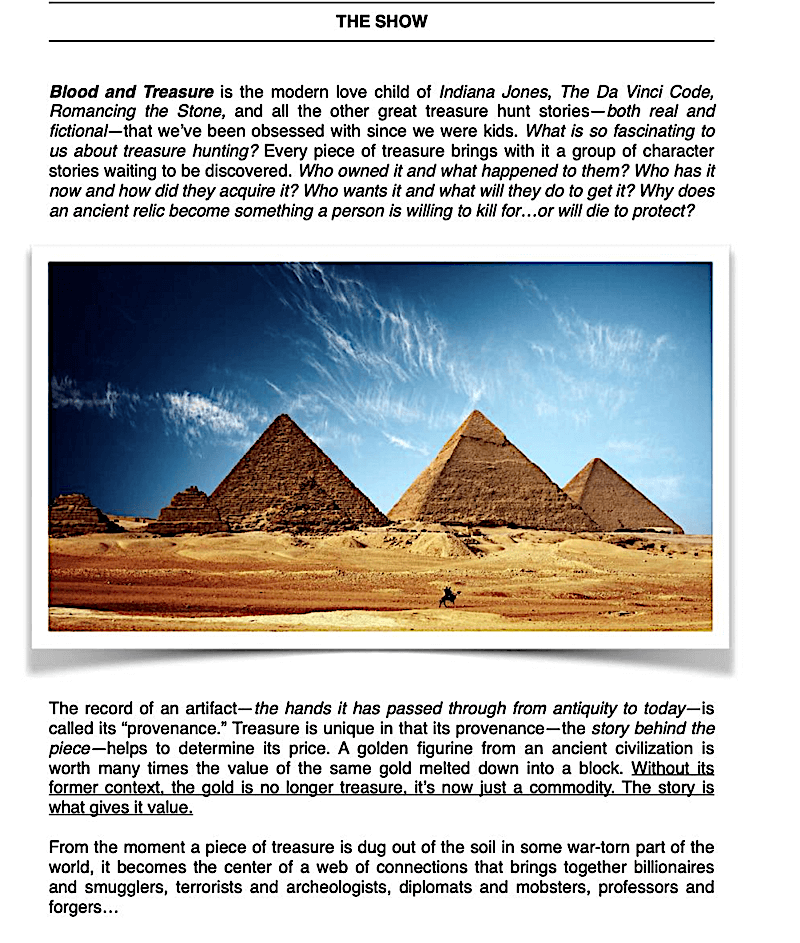
4. Detail How the Show Works
"Next you get into how the show works. For us, it is serialized with a focus on one big treasure per season with smaller side missions. But we make it clear the adventure is a way to explore our characters and their relationships."
This is about details the A Story, B Story, and C Story. The A Story is the central conflict and is often the longest and most important part of each episode and each season. The B Story is the second most important, usually exploring a different dynamic of the plot that the A Story introduced. The C Story is the third most important, but often introduces elements that will carry over to the next episode or season.
It's all about giving the reader a feeling of how each episode is laid out and what the show is going to feel like.
5. Backstory of Characters
"After that, we got into what our treasure is and the story behind it, as in a way it's a character. But generally, here I think you would get into your main (living) characters, including backstory not revealed in the pilot."
This is where you reveal the characters, their arcs, and where they're coming from before the initial conflict and story of the pilot. You're telling the reader about the journey the characters have been on to that point, followed by where they will be going externally and internally as the season progresses.
Learn how to master character names and movie titles with this free guide.
6. Protagonist Relationships and The Antagonist
"We talked about Danny, then Lexi, counter-pointing them. Then talked about our bad guy which naturally leads into the season one arc that pulls it all together."
The backstory of the characters leads to their relationship with one another. If you have a single protagonist, which usually isn't the case for a television series, you'll focus on them and the antagonist. But most of the time you'll have co-protagonists and will want to discuss their character dynamics together.
And then the antagonist is what completes that triangle.
7. Side Characters
"Because our show has a lot of interlocking, evolving relationships we did another page on the different relationship dynamics in the show and how they will play off each other, as well as a page of side characters we'll meet and how they'll affect the adventure."
This is about building the world of your series. You should briefly discuss how the character dynamics will play off of each other and then delve into your side characters that flesh out your world just a bit more.
8. Briefly Describe Additional Season Locations, Story Arcs, Character Arcs
"After showing how season one ends we use that as a template for how other seasons will work, including what types of things would change (i.e. locations/treasures) and what would stay the same (with examples of potential stories)."
You generally want to lay out at least four seasons in that respect. And when you do so, you want to remember to keep it brief. There's no need to get into specific episode breakdowns for each season.
9. The General Show Bible Format
"Different genres will have different needs in this area but the general format of the Bible I think is pretty standard: Big picture (theme/why now); characters, first season arcs; future season ideas. Episode ideas is often a section though ours were implied within our arcs."
There is no be all end all format, but this breakdown is pretty standard.
10. Don't Overwrite, Don't Underwrite
"Don't be overly literary but don't make the mistake of being...under literary? Remember, sales document. Make it easy and enjoyable to read without being verbose. It's neither an owners manual nor a novel. Ours was about 25 pages with pictures and ample white space."
Show bibles are fine balances between offering details and avoiding losing the reader with too many. They should be short, sweet, and to the point while giving the reader a sense that after they've read the bible, they feel like they've seen the show.
11. Create Your Own Original Road Map
"Feel free to alter to your own needs as necessary. The goal is to create confidence in the reader that you know the world, characters, and story you want to tell. They know there will be discovery and deviations. They just want to know you have a road map. Hope that helps!"
Beyond being a sales document, the show bible is about creating a road map for the reader. One that proves takes them through your vision with confidence that you've thought this whole thing through, as every professional writer should.
As with any travel guided by a map, there will be discovery and deviations from the initial, planned journey. And that is understood by the reader and the writer.
Federman leaves writers with a comforting note...
"Take what works for you and leave the rest."
https://youtu.be/UUfcW1h2fl8
Ken Miyamoto has worked in the film industry for nearly two decades, most notably as a studio liaison for Sony Studios and then as a script reader and story analyst for Sony Pictures.
He has many studio meetings under his belt as a produced screenwriter, meeting with the likes of Sony, Dreamworks, Universal, Disney, Warner Brothers, as well as many production and management companies. He has had a previous development deal with Lionsgate, as well as multiple writing assignments, including the produced miniseries Blackout, starring Anne Heche, Sean Patrick Flanery, Billy Zane, James Brolin, Haylie Duff, Brian Bloom, Eric La Salle, and Bruce Boxleitner. Follow Ken on Twitter @KenMovies
For all the latest ScreenCraft news and updates, follow us on Twitter, Facebook, and Instagram.
Tags
Get Our Screenwriting Newsletter!
Get weekly writing inspiration delivered to your inbox - including industry news, popular articles, and more!



